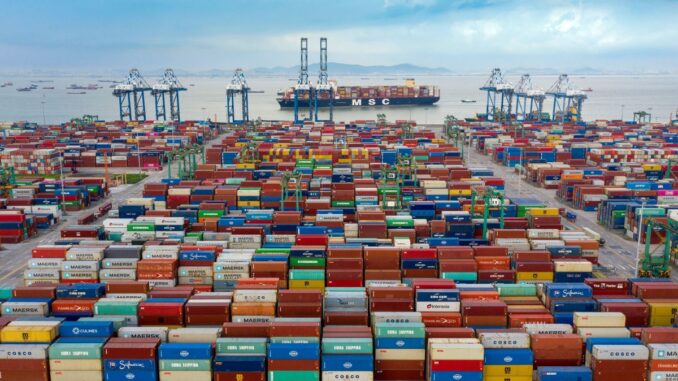
While China’s global influence has grown substantially over the past two decades, its relationships with most major powers have been deteriorating, particularly since the onset of the Covid-19 pandemic.

The United Kingdom announced last year that it was ordering all Huawei infrastructure to be stripped from the country’s 5G networks by 2027. The European Parliament voted in May to halt the ratification of a major investment agreement between China and the European Union. And a number of developments have revitalized the Quadrilateral Security Dialogue (“the Quad”) — an informal grouping comprising the United States, Australia, India and Japan — including deadly border clashes between China and India last year and Beijing’s imposition of tariffs on Australian barley exports. The four countries are not only intensifying their military and diplomatic ties with one another, but also thinking harder about how to develop emerging technologies collectively and provision vaccines to Southeast Asia.
In addition, the communiqué issued after June’s G7 summit demonstrates the extent to which advanced industrial democracies are coalescing around concerns over China, calling for an investigation into the origins of the coronavirus, “including…in China”; pledging to “challeng[e] non-market policies and practices”; urging China to “respect human rights and fundamental freedoms,” especially in Xinjiang and Hong Kong; noting “the importance of peace and stability across the Taiwan Strait”; and expressing opposition to “any unilateral attempts to change the status quo and increase tensions” in the East and South China Seas.
Even as China’s diplomatic standing across much of the developed world declines, its economic centrality grows apace: It registered record exports last year, and its real GDP is expected to expand by 8.4% this year. In dealing with Beijing, the United States and its democratic allies and partners — within the G7, but also outside of it (Australia, India and South Korea, in particular) — will invariably adopt different mixtures of competition, confrontation and cooperation, making a unified coalition unlikely. Indeed, if they orient their collective agenda too narrowly around counterbalancing China’s influence, they risk amplifying the differences between their approaches.
There are at least some fronts, however, on which they will likely, and properly, pursue more widespread, sustained coordination in managing Beijing’s resurgence, with global supply chains and technology standards being among the most significant.
Global supply chains
Some policymakers worry that China could use its manufacturing prowess to exert coercive leverage.
The Covid-19 pandemic has demonstrated the dangers of relying too heavily on any one country for vital commodities. Especially in the early months of the pandemic, many countries with limited domestic supplies of personal protective equipment (PPE) — and a minimal capacity for rapid production — could do little to assist their frontline medical workers until PPE shipments from China arrived.
Meanwhile in China
CNN’s reporters around the world bring you a three-times-a-week update on the latest news you need to know about China’s rise, analysis on what it means for the world, and predictions on what could happen next. Sign up for the Meanwhile in China newsletter.
Many advanced industrial democracies are accordingly taking overdue steps to enhance their individual and collective resilience. In March, US-based Energy Fuels and Canadian-based Neo Performance Materials announced a partnership to strengthen North American and European rare earths supply chains. In April, the United States and Japan agreed to “partner on sensitive supply chains, including on semiconductors,” while Australia, India and Japan launched an initiative to boost the resilience of various supply chains that flow through the Asia-Pacific.
Though it will likely take decades to recalibrate these various production pathways, such efforts are prudent first steps.
Technology standards
Advanced industrial democracies are also poised to play a more active role in shaping the standards that will govern core emerging technologies.
In January, India and Japan inked an agreement to boost ties across a range of fields in information communication and technology, including telecommunications security. In March, the European Union and Japan signed a declaration to cooperate more closely on developing shared 5G standards. That same month, the Quad established a Critical and Emerging Technology Working Group to enhance coordination on technology standards development. The G7 endorsed a framework for collaboration on digital technical standards at its summit in June, and Washington and Brussels shortly thereafter launched a Trade and Technology Council that will help strengthen US-EU cooperation on artificial intelligence and “Internet of Things” standards.
Here, too, it will take time for these initiatives to bear fruit. Technology standards emerge gradually, and democracies have significant disagreements amongst themselves over what those standards should be — not just concerns over those Beijing is promulgating. Still, they should continue trying to shape norms around the technologies that will undergird this century’s economic development.
If China doubles down on its current diplomacy, it will intensify advanced industrial democracies’ alignment not only on global supply chains and technology standards, but potentially on even more sensitive issues as well, including Beijing’s human rights abuses and expansive maritime claims. As the Chinese Communist Party marks its 100th anniversary, the country’s leadership would do well to consider how Beijing might recalibrate its foreign policy.
Still, even if democratic governments take a harder line on China, businesses may not follow suit. Indeed, the strength of Beijing’s recovery underscores how difficult it will be for other countries to reduce their short- and even medium-term economic reliance on it. In addition, advanced industrial democracies cannot address pandemic disease, climate change and other transnational challenges without maintaining a baseline of cooperation with China, which accounts for 16% of the world’s output and 18% of its people.
Cooperation on China is likely to be selective, resembling more of an issue-specific patchwork of agreements between different groupings of countries than a coherent set of strategic policies. That cooperation should inform, not dictate, the agenda that the United States and its longstanding allies and partners pursue; they should focus above all on ensuring that whatever world emerges from the pandemic is better able to withstand and recover from both short-term crises and longer-term stresses.
END

Be the first to comment